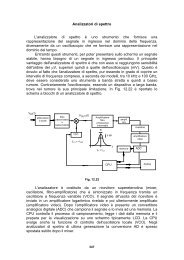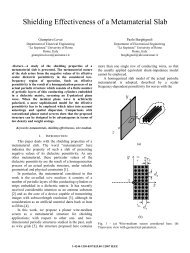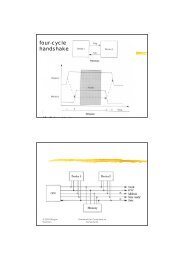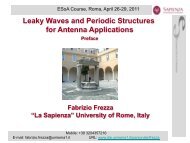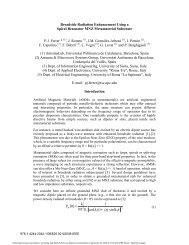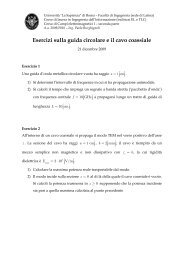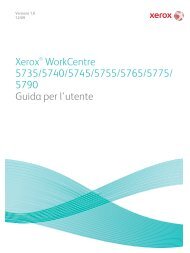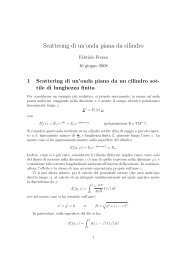Introduction to Traveling-Wave antennas.pdf
Introduction to Traveling-Wave antennas.pdf
Introduction to Traveling-Wave antennas.pdf
You also want an ePaper? Increase the reach of your titles
YUMPU automatically turns print PDFs into web optimized ePapers that Google loves.
2 <strong>Introduction</strong> <strong>to</strong> TWAA periodic leaky-wave antenna structure is one that consists of a uniform structurethat supports a slow (non radiating) wave that has been periodically modulatedin some fashion. Since a slow wave radiates at discontinuities, the periodic modulations(discontinuities) cause the wave <strong>to</strong> radiate continuously along the length ofthe structure. From a more sophisticated point of view, the periodic modulation createsa guided wave that consists of an infinite number of space harmonics (Floquetmodes). Although the main (n = 0) space harmonic is a slow wave, one of the spaceharmonics (usually the n = −1) is designed <strong>to</strong> be a fast wave, and hence a radiatingwave.A typical example of a uniform leaky-wave antenna is a rectangular waveguidewith a longitudinal slot. This simple structure illustrates the basic properties common<strong>to</strong> all uniform leaky-wave <strong>antennas</strong>.√The fundamental TE 10 waveguide mode is a fast wave, with β = ko 2 − ( ) 2πalower than k o . The radiation causes the wavenumber k z of the propagating modewithin the open waveguide structure <strong>to</strong> become complex. By means of an applicationof the stationary-phase principle, it can be found in fact that:βk o=cv ph= λ oλg ≃ sin θ m (1)where θ m is the angle of maximum radiation taken from broadside. As is typical fora uniform LWA, the beam cannot be scanned <strong>to</strong>o close <strong>to</strong> broadside (θ m = 0), sincethis corresponds <strong>to</strong> the cu<strong>to</strong>ff frequency of the waveguide. In addition, the beamcannot be scanned <strong>to</strong>o close <strong>to</strong> endfire (θ m = 90 ◦ ) since this requires operation atfrequencies significantly above cu<strong>to</strong>ff, where higher-order modes can propagate, atleast for an air-filled waveguide. Scanning is limited <strong>to</strong> the forward quadrant only(0 < θ m < π ), for a wave traveling in the positive z direction.2Figure 1: Slotted guide (patented by W. W. Hansen in 1940)This one-dimensional (1D) leaky-wave aperture distribution results in a “fanbeam” having a narrow beam in the xz plane (H plane), and a broad beam in thecross-plane. A pencil beam can be created by using an array of such 1D radia<strong>to</strong>rs.Unlike the slow-wave structure, a very narrow beam can be created at any angleby choosing a sufficiently small value of α. A simple formula for the beam width,European School of Antennas




